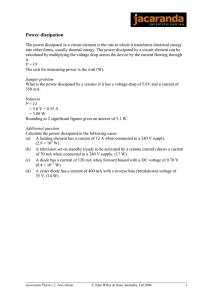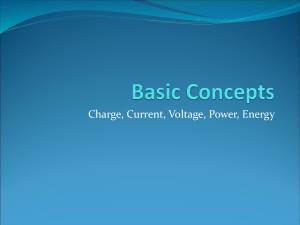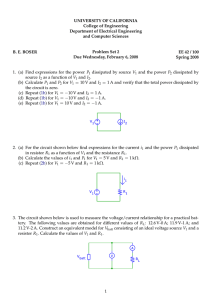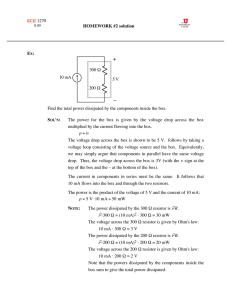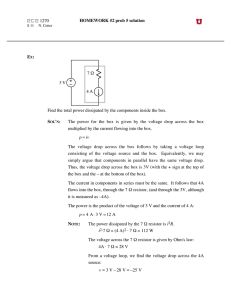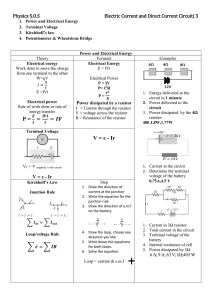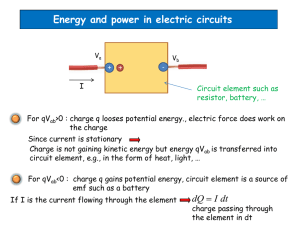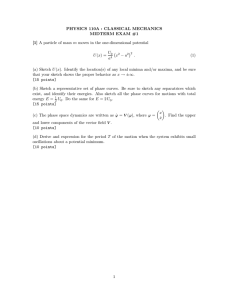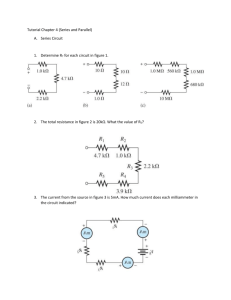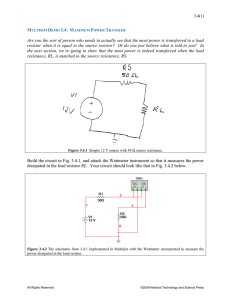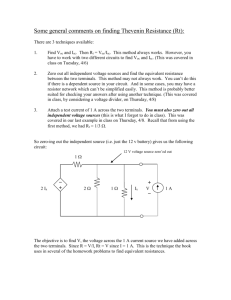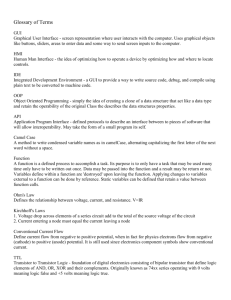POWER AND ENERGY
advertisement
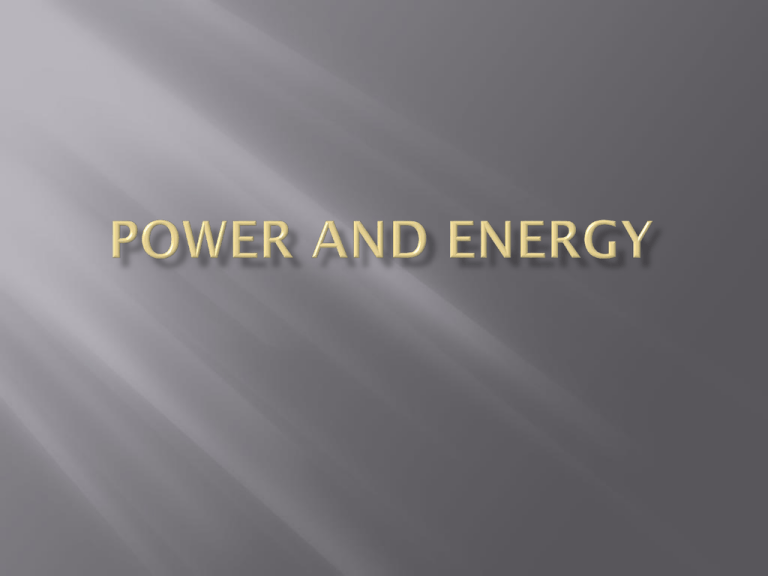
Tell the electric company how much electrical energy is used Measure kW hrs (energy units like Joules) In most homes and factories outlets vary in voltage (110 V, 220 V, etc) To determine energy use per outlet V=IR, I = q/t, W = Vq Meters measure voltage and current instantaneously and calculate power and energy Power = energy = Vq time t Since I = q t Power, P = VI Units: (A)(V) = C J = J = W s C s **Electrical meters measure kW hrs → (P)(t) Devices (TV, Refrigerator, etc) are rated for maximum power/voltage/etc. (They stop working if exceeded) Devices can be overpowered by accident by overloading outlets – draws too much current Example: plugging too many things into the same outlet Ground Fault (short circuit) – contact is made between live and ground conductors Example: Working hair dryer in water – plumbing is connected to ground Preventing Accidental Overload Fuses Circuit breakers small filaments (like light bulbs) Burn out when too much current is drawn bimetallic strip heats up when too much current is drawn bends when heated which opens switch to prevent current flow GFI outlets and breakers Complex circuitry that senses too much current almost instantly Opens circuit at outlet or breaker 0.00l A and higher – feel shock 0.01A and higher – unable to release 0.02 A and higher – paralyzes respiratory muscles (you can’t breath) 0.1 A and higher – ventricular fibrillation (erratic heartbeat) 1.0 A and higher – “cooked” Skin has very high resistance – approximately 100,000 Ω So, V = IR 10 V = I (100,000 Ω) I = 0.0001 A Remember! You can’t have a current without a voltage To calculate the power dissipated in a resistor: P = IV Or If I is unknown then because V = IR, P = V2/R If V is unknown then because V = IR, P = I2R To calculate the total power dissipated by the circuit use the total current and total voltage Total power dissipated in the circuit = sum of the power dissipated in each resistor Ptotal = P1 + P2 R2 Figure 3 R1 R1 R2
